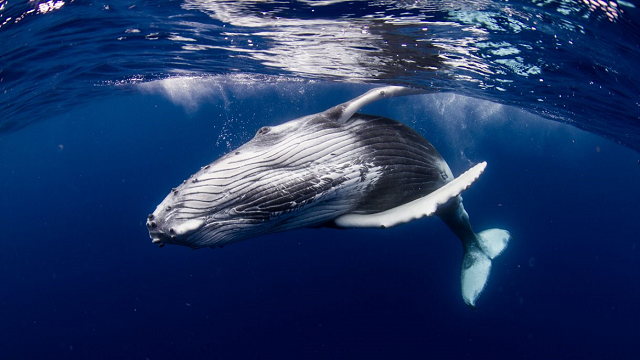Land animals that take to the water evolve quickly and converge at a similar size.
Learn why some mammals grow so large in this resource for Year 5, 7, 8, 9 and 10 Biology students.
Word count: 559

Whales, elephant seals and other giants of the sea are big because they have to be, but their environment actually stops them really letting themselves go, a new study has found.
Stanford University researchers say that aquatic mammal size is restrained at the bottom end by the need to retain heat and at the top end by difficulties getting enough food to survive.
This is in contrast to previous theories suggesting that sea creatures are free to keep growing because their body size is not restricted by need to support their weight on legs.
“Many people have viewed going into the water as more freeing for mammals but what we’re seeing is that it’s actually more constraining,” said co-author Jonathan Payne, a professor of geological sciences at Stanford Earth.
“It’s not that water allows you to be a big mammal, it’s that you have to be a big mammal in water.”
The exception at the top end are baleen whales, which expend much less energy on feeding than their toothed counterparts because they filter all their food. This make them more efficient and allows them to grow larger than toothed whales.
“The sperm whale seems to be the largest you can get without a new adaptation,” said lead author Will Gearty, a graduate student at Stanford Earth. “The only way to get as big as a baleen whale is to completely change how you’re eating.”
Although mammals that live in water have a similarly oblong shape, they are not closely related. In fact, seals and sea lions are related to dogs, manatees share ancestry with elephants, and whales and dolphins are related to hippos and other hoofed mammals.
To learn more about how these groups of land mammals took on their characteristic girth when they turned aquatic, the researchers compiled body masses for 3,859 living and 2,999 fossil mammal species from existing data sets.
They found that once land animals take to the water they evolve quickly toward their new size, converging at around 450 kg. Those with smaller ancestors increase in size more than those with larger ancestors to reach that optimal weight, suggesting bigger is better for aquatic life, but only up to a point.
Otters, which took to the water more recently, don’t follow that trend, perhaps because many otter species still live much of their lives on land.
“The key is having a phylogenetic tree to understand how these species are related to one another and the amount of time that has taken place between different evolutionary branching events,” Gearty said.
“The tree of ancestral relationships allows us to build models based on data from modern species to predict what the ancestors’ body sizes would have been and see what evolutionary trajectories best fit with what we see in the modern day.”
The group argues that a larger size helps aquatic mammals retain heat in water that’s lower than body temperature.
It also suggests that metabolism increases with size more than an animal’s ability to gather food, putting a boundary on how big aquatic mammals can grow.
“The range of viable sizes for mammals in the ocean is actually smaller than the range of viable sizes on land,” Payne said. “To demonstrate that statistically and provide a theory behind it is something new.”
The paper was published in Proceedings of the National Academy of Sciences.
Log in or Sign up for FREE to download a copy of the full teacher resource





